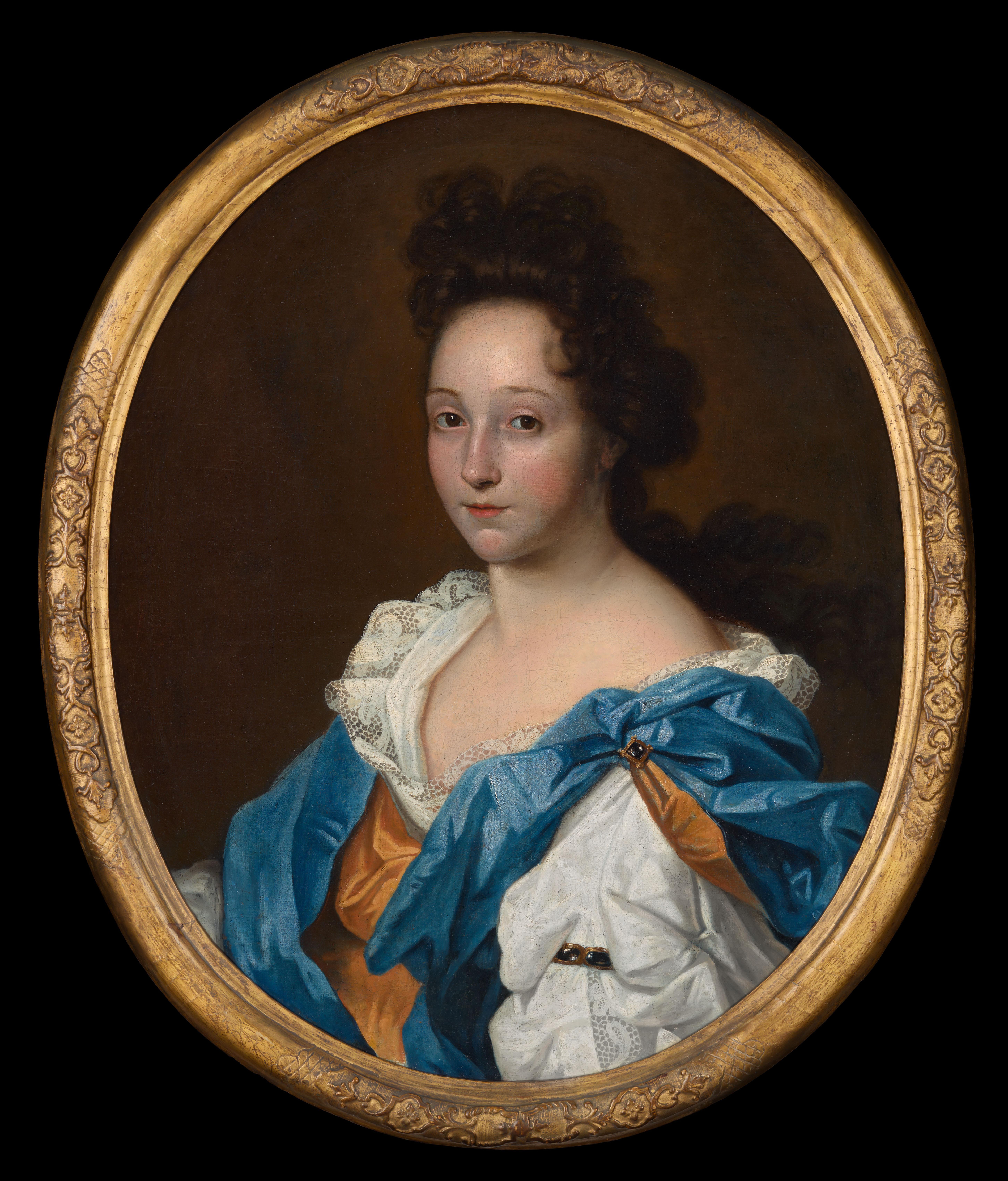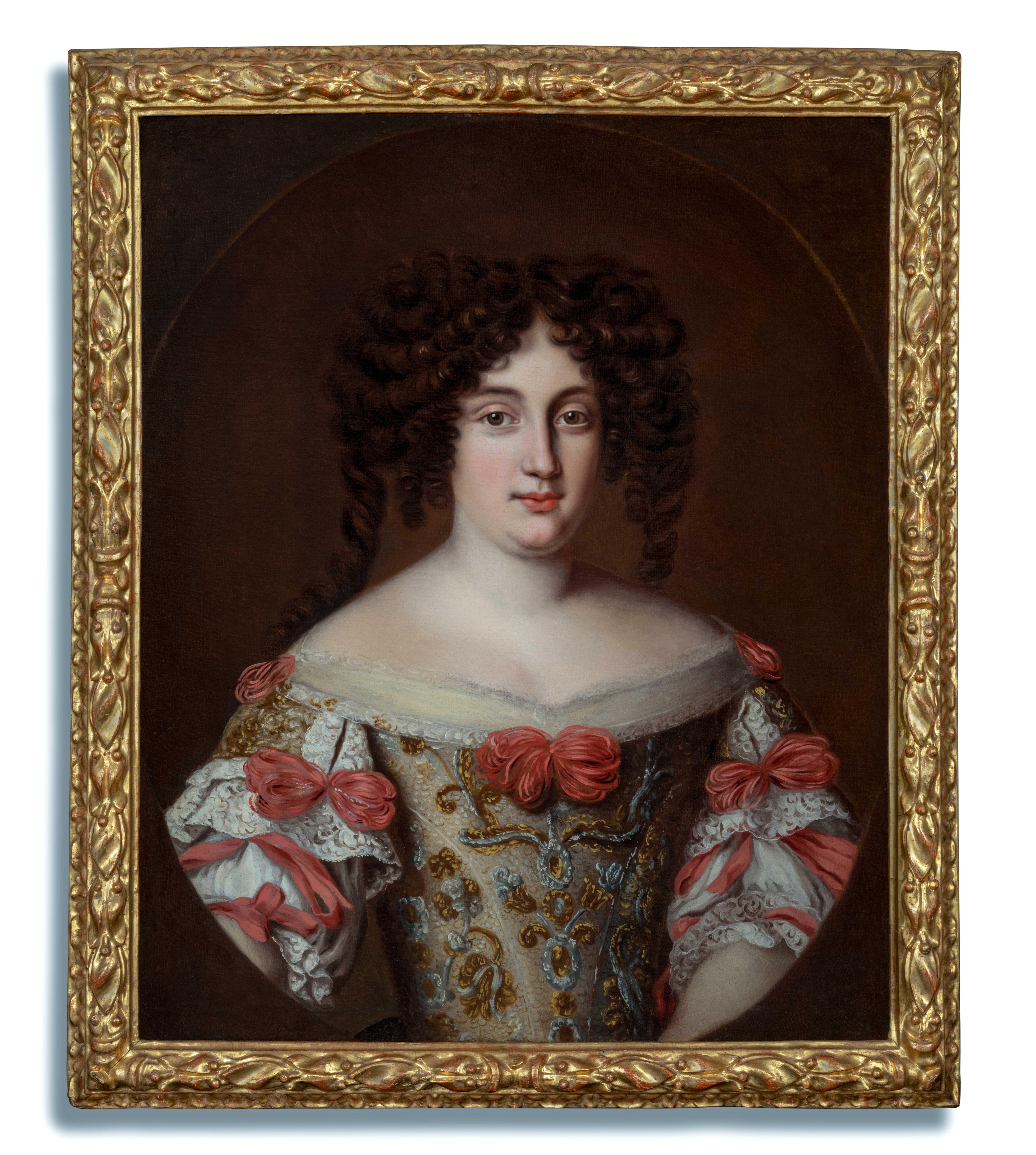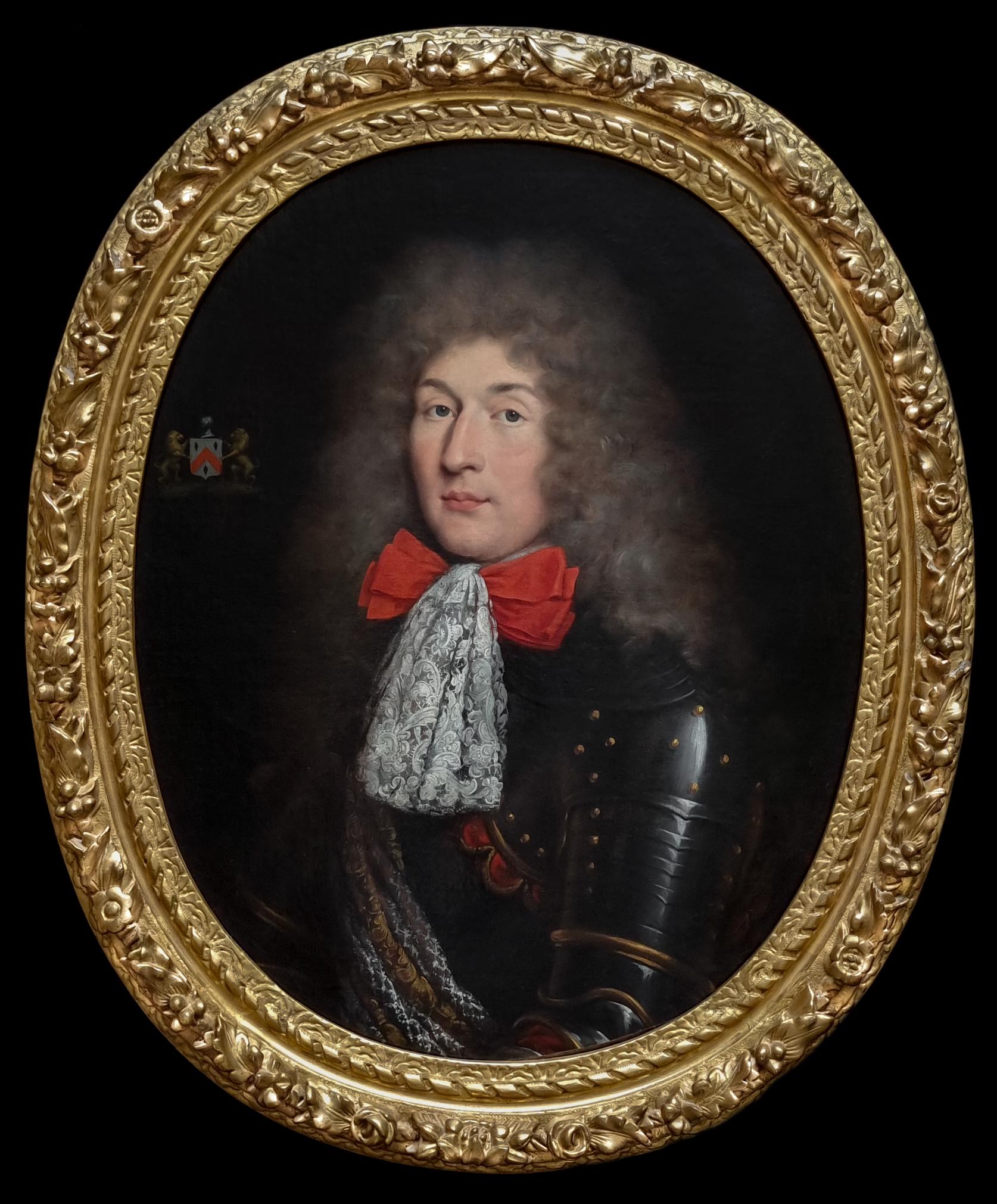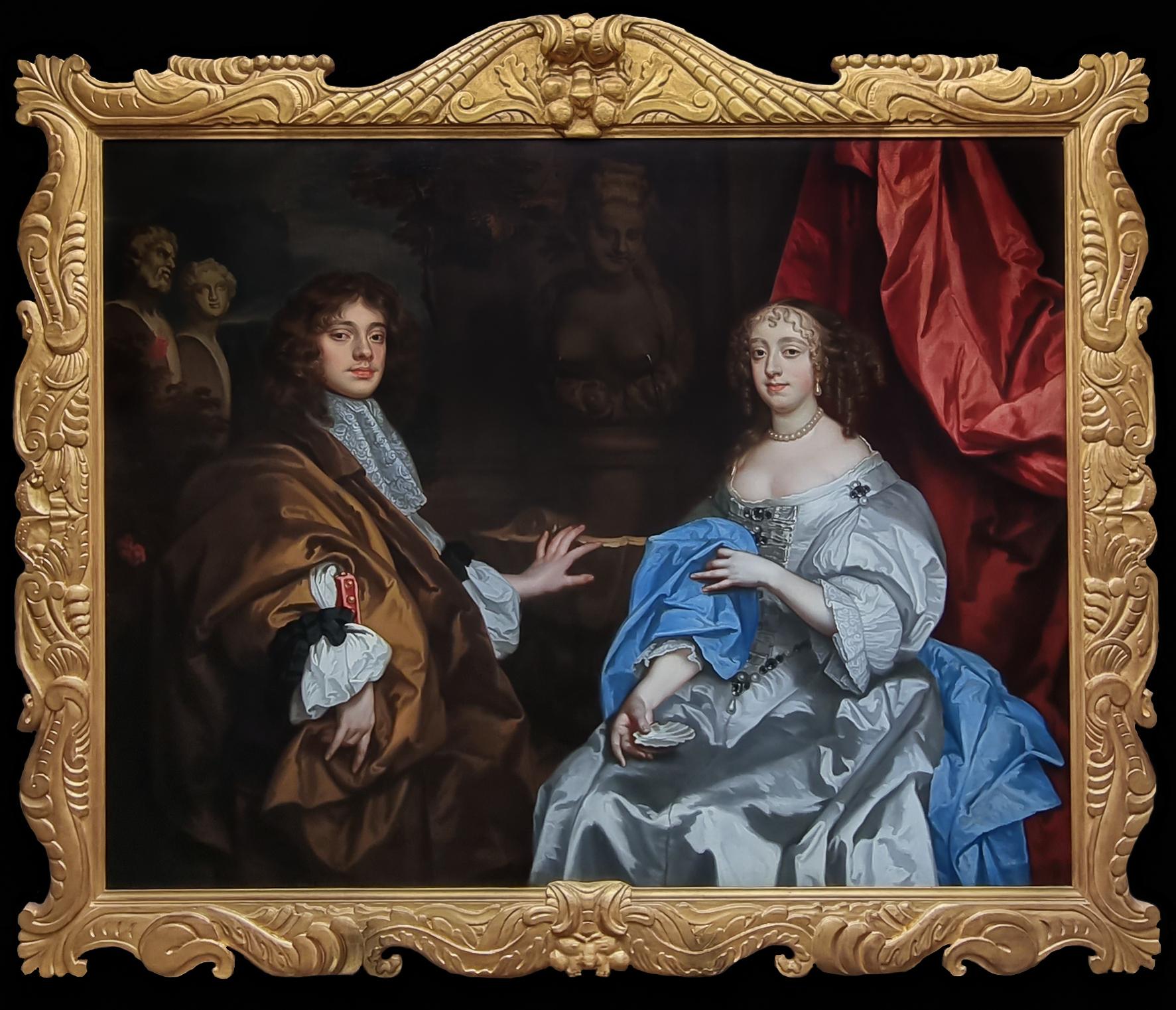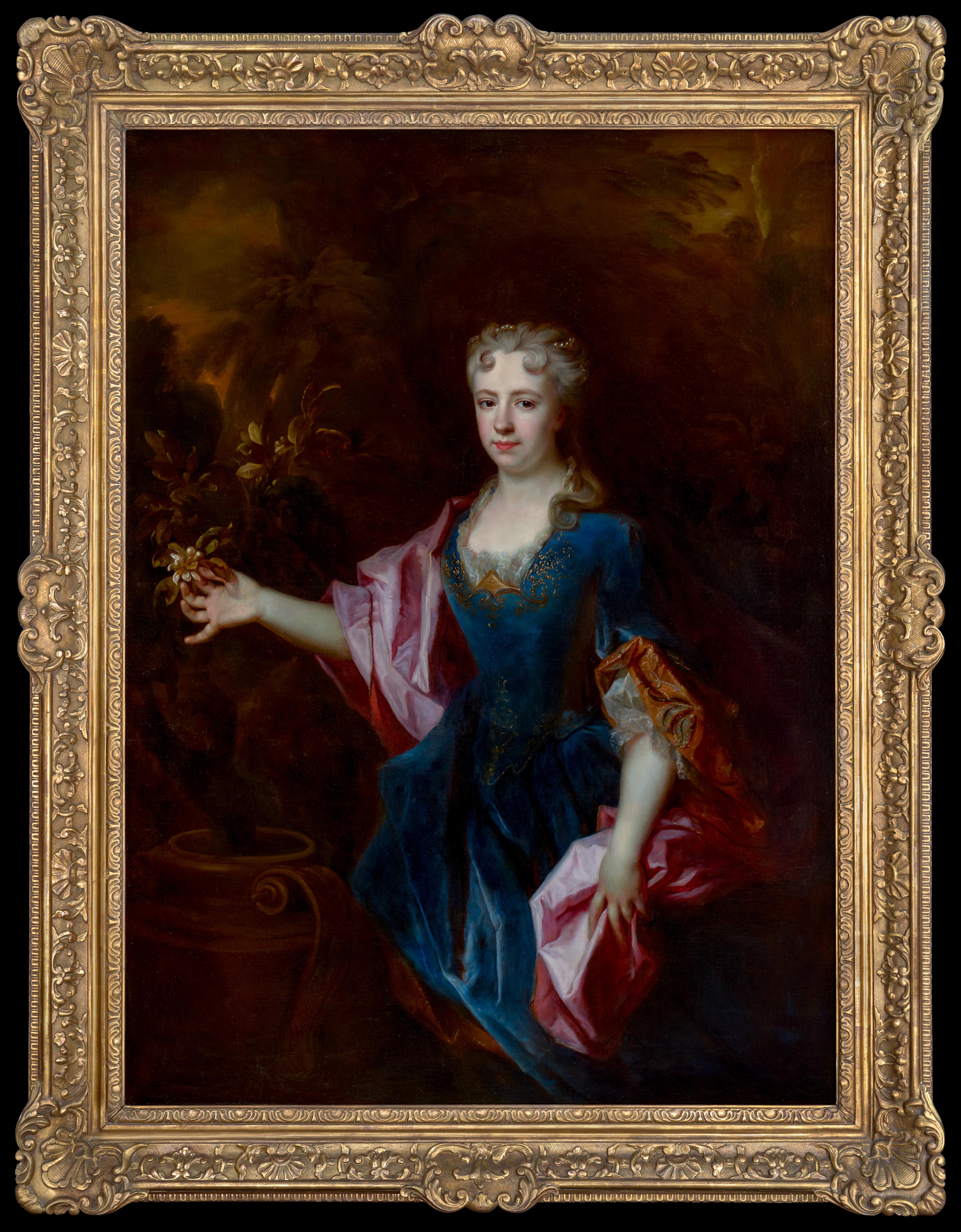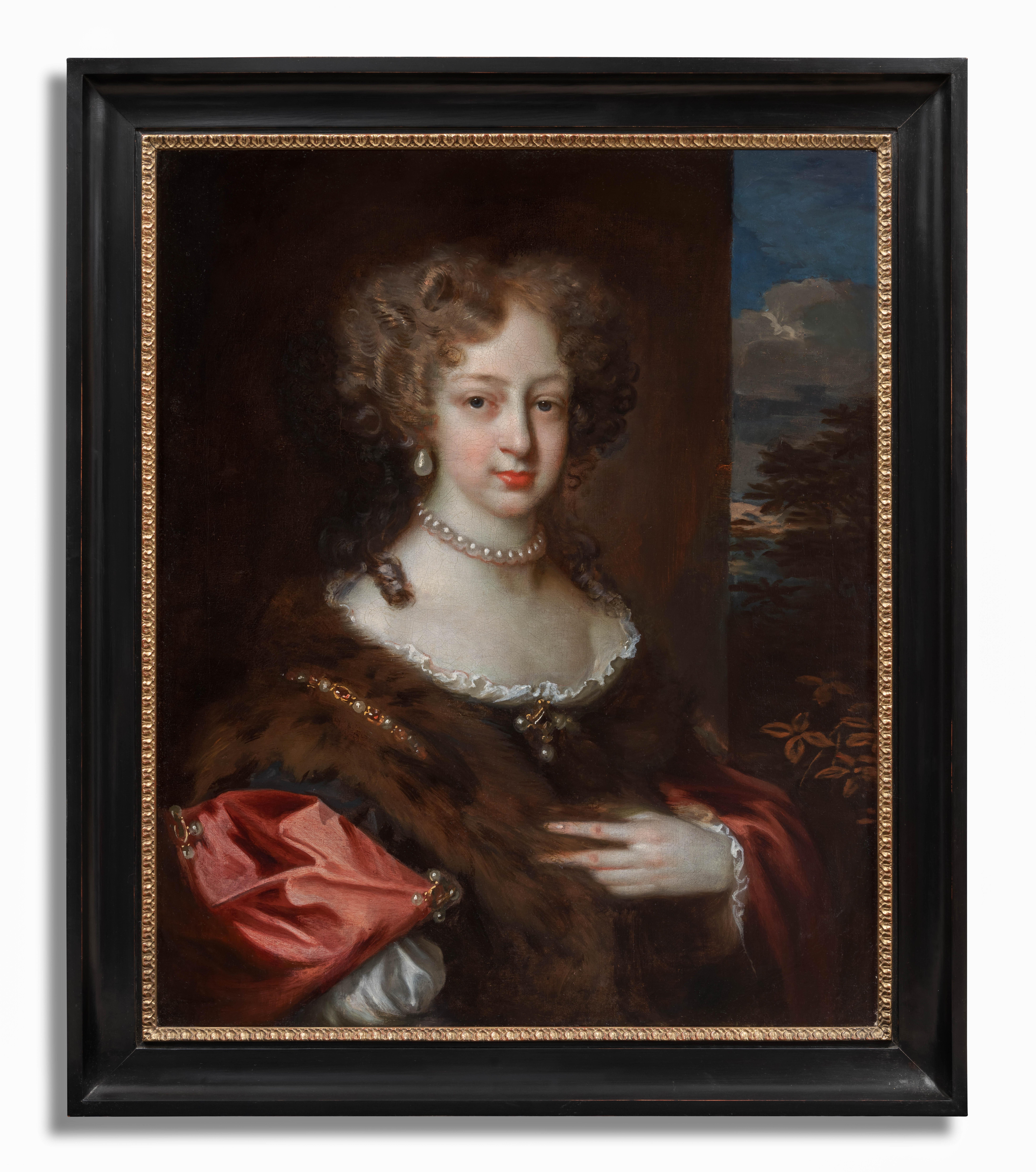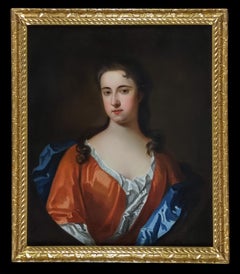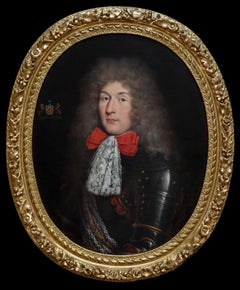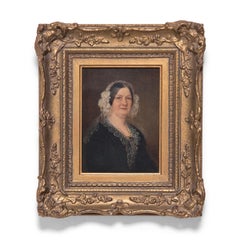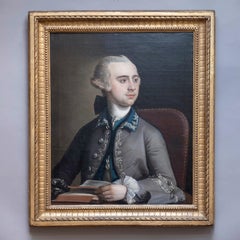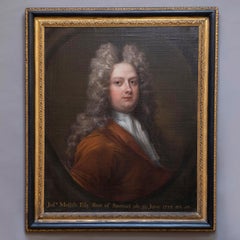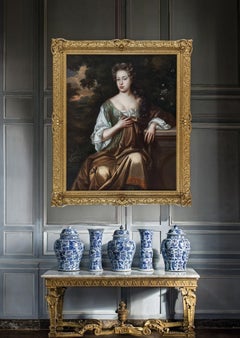
English Portrait of a Lady Seated by a Plinth in Wooded Landscape, Oil on canvas
View Similar Items
Want more images or videos?
Request additional images or videos from the seller
1 of 12
English Portrait of a Lady Seated by a Plinth in Wooded Landscape, Oil on canvascirca 1684-1687
circa 1684-1687
About the Item
- Creation Year:circa 1684-1687
- Dimensions:Height: 58.08 in (147.5 cm)Width: 49.22 in (125 cm)Depth: 3.94 in (10 cm)
- Medium:
- Movement & Style:
- Circle Of:Willem Wissing (1656 - 1687, Dutch)
- Period:
- Condition:This painting has passed a strict quality and condition assessment by a professional conservator prior to going on sale. It can be hung and enjoyed immediately. A custom-made wood crate will be used for ultimate safety, for international shipping.
- Gallery Location:London, GB
- Reference Number:1stDibs: LU1199113164402
About the Seller
5.0
Gold Seller
These expertly vetted sellers are highly rated and consistently exceed customer expectations.
Established in 1998
1stDibs seller since 2019
34 sales on 1stDibs
Authenticity Guarantee
In the unlikely event there’s an issue with an item’s authenticity, contact us within 1 year for a full refund. DetailsMoney-Back Guarantee
If your item is not as described, is damaged in transit, or does not arrive, contact us within 7 days for a full refund. Details24-Hour Cancellation
You have a 24-hour grace period in which to reconsider your purchase, with no questions asked.Vetted Professional Sellers
Our world-class sellers must adhere to strict standards for service and quality, maintaining the integrity of our listings.Price-Match Guarantee
If you find that a seller listed the same item for a lower price elsewhere, we’ll match it.Trusted Global Delivery
Our best-in-class carrier network provides specialized shipping options worldwide, including custom delivery.More From This Seller
View AllPortrait Lady in Red Silk Dress c.1710, Michael Dahl, oil on canvas painting
By (Circle of) Michael Dahl
Located in London, GB
This charming work is a good example of the type of portrait in vogue during the first quarter of the eighteenth century in Britain. The sitter, portrayed bust-length, wears a russet silk dress over a white chemise...
Category
18th Century Old Masters Portrait Paintings
Materials
Canvas, Oil
Portrait of a Lady in White Chemise, Russet & Blue Drapery c.1695, Oil Painting
By Harman Verelst
Located in London, GB
This lavish portrait, painted circa 1695, is an exquisite example of the type of portrait in vogue during the last quarter of the seventeenth century. It is evident that the artist ...
Category
17th Century Old Masters Portrait Paintings
Materials
Canvas, Oil
Portrait of a Lady, Maria Virginia Borghese Chigi Princess Farnese Oil on canvas
Located in London, GB
This exquisite portrait, presented by Titan Fine Art, belongs to a type of portrait known as ‘Les Belle Romanes’; Voet is perhaps best remembered for his series of them – a great set of portraits...
Category
17th Century Old Masters Portrait Paintings
Materials
Canvas, Oil
Portrait of Gentleman in Lace Cravat & Armour 1680’s Painting, Fine Carved Frame
By (circle of) Pierre Mignard
Located in London, GB
Titan Fine Art presents this portrait of a brave and chivalrous character. The gentleman has been depicted in armour, an elaborate full wig, and in accordance with the latest French fashion, an elaborate type of Venetian Gros point lace cravat and large silk bow (also called a cravat-string) – a type that were popular across Europe in the 1680’s. Point lace was fabulously expensive - a cravat was equivalent to six weeks income for a gentleman - and therefore indicative of a wearer's wealth and social class. A nobleman riding onto the battlefield would wear a lace cravat over his armour to demonstrate his status. The attire, along with the coat-of-arms, help to proclaim to every onlooker that the gentleman is a superior being. The depiction of the lace, apart from denoting the wealth of the sitter, was a deliberate way for the artist to demonstrate his own artistic ambition and technical skills
Argent seasoned gule with three lozenges sable are those of the Crois family, who were minor nobility, originating from the Boulogne region in the north of France. The fact that the sitter is a high ranking noble excludes him as a member of the Crois family. As is so commonly the case, the coat of arms was a later addition, probably in the nineteenth century, by a family who sought to glorify their pedigree by adding their arms to the portrait. These arms are now an interesting part of the portraits history.
The artist has captured a sense of the sitter’s character and the features of the sitter’s face have been rendered with great sensitivity. His confident gaze perhaps reflecting the near invincibility afforded by this steel suit.
The work is a very good example of French portraiture from the period.
Presented in an exquisite hand-carved and gilded seventeenth century frame - which is an exceptional work of art in itself.
Pierre Mignard, known as le Romain, was a French painter of the court of the French King Louis XIV and was, with Charles Le Brun (1619-90), one of the most successful painters during the reign of Louis XIV. After training in Troyes, where he was born, and in Bourges, Mignard joined the studio of Simon Vouet in Paris in 1627. He went to Italy in 1636 and remained there until 1657. He studied the work of Correggio and Pietro da Cortona in Rome as well as copying Annibale Carracci's frescoes in the Palazzo Farnese. On Le Brun's death in 1690 he succeeded him as its Director and as First Painter to the King painting...
Category
17th Century Old Masters Portrait Paintings
Materials
Canvas, Oil
Portrait of a Lady, Jane Wood in Blue Dress c.1750, Fine Carved Gilded Frame
Located in London, GB
This work formed part of an ancient collection of family heirlooms of the Wood family of Bracon Ash, Norfolk. This painting, along with another (also with Titan Fine Art at the time of writing), of our sitter’s sister, descended within the family for around 275 years until recently dispersed; they are exquisite examples of Georgian portraiture in England and represents the best of the artist’s work. They are held in their original carved and gilded frames, which are absolute top quality and condition and magnificent works of art in their own right. The sitter’s daughter, Ann, was famously married on board the Foudroyant, off Naples, in a lavish ceremony in 1799, with Lord Nelson himself giving away the bride.
The sitter is Jane Wood. Her father was Thomas Wood (1682-176) and Dorothy Huby (1700-1759) and the family lived in Norwich, which in 1720 was a city second in importance only to London. Jane was baptised 14 Oct 1727 at Bracon Ash and had many siblings. Her aunt, also Jane (died in 1756 in Bruges, aged 79) was a Franciscan nun. A portrait of her younger sister, Dorothy Wood (1730-1759), is also with Titan Fine Art at the time of writing.
In 1758 Jane married Knipe Gobbet (1730/5-1791) who was Sheriff in 1768 (and Mayor in 1771) of the City of Norwich, and later Lieutenant-Colonel of the West Norfolk Regiment, in which corps he had served in for many years. Knipe was born at his family seat, Tacolneston Hall, to parents George Gobbet (Sheriff in 1710) and Ann. The couple bought and lived in a house in Norwich (later known as Gurney’s Bank House) until 1778 before moving to another one at 10 St Stephen’s Street, Norwich. Later, they inherited the family seat of Tacolnestan Hall and lived there for the remainder of their lives.
Knipe Gobbet was a prominent individual. In 1779 he gave the corporation of Norwich 100 pounds to be disposed of as they might think proper and soon after that he was presented with a handsome field tent, marquee, and camp equipage, in testimony of their esteem for his dedication to the defence and service of this country at a time when threatened by an invasion.
Although Jane was baptised a Roman Catholic Knipe was a prominent local wine merchant, JP, Alderman, sheriff, mayor and Lieutenant. Roman Catholics may have paid lip service to religious conformity as they were excluded from certain areas of public life before the Catholic Emancipation Act of 1829.
The couple had many children, most of which were schooled at the Order of the Immaculate Conception of Our Lady, in Paris. Their oldest daughter, Anne (1760-1817) first married Peter Bottalini of London 27 Oct 1783 at Tacolneston Hall. They had one son together. She later met Dr William Compton (1733- 1824), who was Chancellor of Ely and the next collateral male relation to the Earl of Northampton, and on 9th July 1799, they married in a famous and lavish ceremony on board the Foudroyant, off Naples, where the bride was given away by the Right Hon. Lord Nelson himself (Ann and William then spent many years on the continent where they were British residents of Posilipo Naples).
The marriage document, signed by Lord Nelson, Lady Emma Hamilton, Captain Thomas Hardy, and others descended within the family, until sold in a recent sale that raised worldwide interest. It accounts: 'This is to certify that, on board the Foudroyant lying in Naples Bay, on the ninth of July 1799 the marriage between William Compton & Mrs Anne Bottalin, widow, was solemnized by me S. G. Comyn HM. Chaplain to the Right Honble Lord Nelson, H.M.S. Foudroyant, in the presence of'. With the following autograph signatures: Sir William Hamilton (1731-1803), Lady Emma Hamilton (1765-1815), Horatio Nelson, Viscount Nelson (1758-1805); Sir John Thomas Duckworth (1747-1817), Sir Thomas Masterman Hardy (1769-1839), John Rushout, 2nd Baron Northwick (1769-1859), Josiah Nisbet (1780-1830), John Tyson, William Compton and Anne Bottalin, and 2 others”
The document sheds light on Nelson's lesser-known side of his character. William Compton ... received "a great many favours and kindnesses" from Nelson, and most especially "the kind interest" taken in sealing his union with a wife who made him "the happiest of mortals". Anne, the aforesaid spouse, said that the admiral's "good heart" had made her "as happy as I can possibly be on this earth" ... Midshipman Parsons remembered those days nostalgically, noting Emma's "graceful form" bending over her harp to bestow "heavenly music" upon the diners on the quarterdeck and the large-decked galley, flush with opera singers, that glided alongside to serenade the sunset of each day'.
Our sitter’s other children were: 1) Thomas, who died in 1762, aged four, of a small-pox inoculation, 2) Dorothy (died suddenly of apoplexy 21st Nov 1813). She came to the convent 19th July 1777 and returned to England 23 March 1779, 3) Frances (baptised 22 Feb 1763), who came to the convent when she was nine years old, and eventually married and her surname became Negri, 4) Jane, is thought to have married Juan Manuel Martinez in 1784, 5) and a further possible daughter, Mary.
Jane died in 1790 and her husband one year later.
Tacolneston has an ancient history of which according to the Domesday Book, Edward I granted a weekly market to be held on a Wednesday at the manor of Tacolneston and two annual fairs. The church was rebuilt in 1503 and is dedicated to All Saints. The earliest view of Tacolneston is a print of 1781 when it belonged to Knipe Gobbet Esq.
John Theodore Heins (1697-1756) was a painter whose work, at his best, shows detail of an exceptionally high quality. His portraits of Anna Maria Kett nee Phillips and her husband Henry Kett, painted in 1741, are exceptional and evidence that he had the ability to portray a likeness on par with some of the best portraitists in England at the time.
Heins appears to have originated in Germany but moved to the UK and settled in Norwich around 1720. From 1720 to his death in 1756, Heins built up a fine reputation as a portrait painter and painted many members of prominent Norfolk families right up to his last year. He was commissioned in 1732 to paint a portrait of the Mayor of Norwich, Francis Arnam and also the previous year's Mayor Robert Marsh...
Category
18th Century Old Masters Portrait Paintings
Materials
Canvas, Oil
Portrait of a Gentleman in Scarlet Robe Holding Flowers c.1675, Oil on canvas
Located in London, GB
Titan Fine Art present this striking portrait, which was painted by one of the most talented artists working in England during the last half of the 17th century, John Greenhill. Gre...
Category
17th Century Old Masters Portrait Paintings
Materials
Canvas, Oil
You May Also Like
Oil Portrait of a Victorian Lady, c. 1850
Located in Chicago, IL
Painted in the 19th century, this exquisite miniature portrait wonderfully exemplifies realism in traditional oil painting. The small artwork is painted in the conventional portraiture style of the Old Masters, and achieves soft realism with fine brushwork and a subdued, neutral palette. The half length portrait depicts a fine Victorian woman dressed in all black with a delicate lace collar and bonnet. She wears a ruby broach...
Category
Mid-19th Century Old Masters More Art
Materials
Oil
Henry Pickering, Portrait of a Gentleman
By Henry Pickering
Located in London, GB
Henry Pickering, Portrait of a Gentleman
Oil on canvas; signed and dated 1759; held in a giltwood period frame
Provenance: Lenygon & Morant Ltd. c.1900; Knoedler, October 1912 (Sto...
Category
Mid-18th Century Old Masters Portrait Paintings
Materials
Oil
Charles Jervas, Portrait of Joseph Mellish
By Charles Jervas
Located in London, GB
Charles Jervas (1675-1739)
Portrait of Joseph Mellish (1675-1733)
Oil on canvas; held in a carved period frame
Dimensions refer to size of frame.
Provenance: Blyth Hall, Nottinghamshire, England; by descent to Sir Andrew Buchanan of Hodsock Priory, Nottinghamshire
In 1635 John Mellish, a merchant tailor of London, bought the estate of Blyth in Nottinghamshire. His son, a wealthy Oporto merchant, dying unmarried, left Blyth in 1703 to a cousin, Joseph Mellish, who became one of Newcastle’s earliest and most important political supporters in the county. He went up to Clare College, Cambridge in 1692 and on to the Inner Temple the following year. He married Dorothea Gore, daughter of Sir William Gore...
Category
Early 18th Century Old Masters Portrait Paintings
Materials
Oil
Portrait of Angelica Singleton Van Buren
Located in Milford, NH
A fine oil painting portrait of (Sarah) Angelica Singleton Van Buren by American portraitist Sanford Mason (1798-1862). Mason was born in Providence, Rhode Island, and was known as a sign painter and portrait artist. The sitter, Sarah Angelica Singleton Van Buren, was an American heiress and the daughter-in-law of the eighth president of the United States, Martin Van Buren...
Category
1830s Portrait Paintings
Materials
Canvas, Oil
European Portrait of a Priest
Located in Milford, NH
A fine European portrait of a priest, oil on canvas, probably dating to the 17th or 18th century, unsigned, with original stretcher, minor surface losses and damage, craquelure, edge...
Category
17th Century Portrait Paintings
Materials
Oil, Canvas
Portrait of a Gentleman, Probably German
Located in Milford, NH
A fine 18th century unsigned oil on canvas portrait of a gentleman, probably German in origin, unsigned, and housed in a molded ebonized period wooden frame with gilt inset. A Christ...
Category
18th Century Portrait Paintings
Materials
Canvas, Oil
Recently Viewed
View AllMore Ways To Browse
Dutch Master Lady
Charles Gill
17th C Portrait Lely
Studio Of Sir Peter Lely
Pastoral Castle Oil Painting
Catherine Of Braganza
Willem Wissing
Extensive English Wooded Landscape
Noble Man
Portraits Asian Woman
Circle Tapestry
17th Century Oil Painting Attributed
18th Century Oil Portrait French
Dior Oxford
French Portraits 19th C
18th Century Family Portrait
Gilt Framed Lady Oil Paintings
Painting Portrait Handsome

